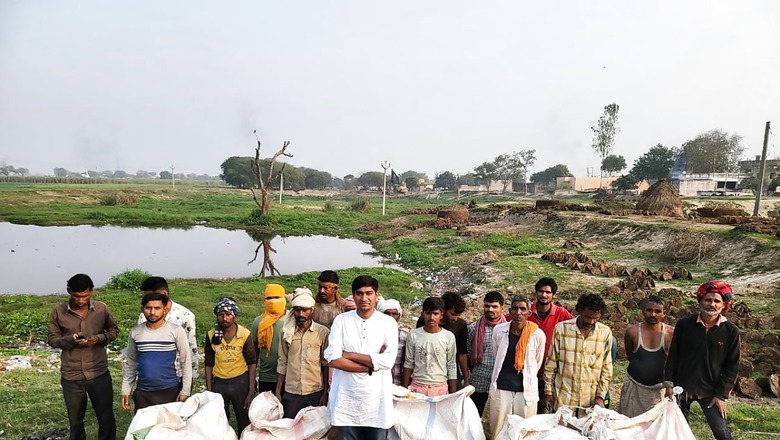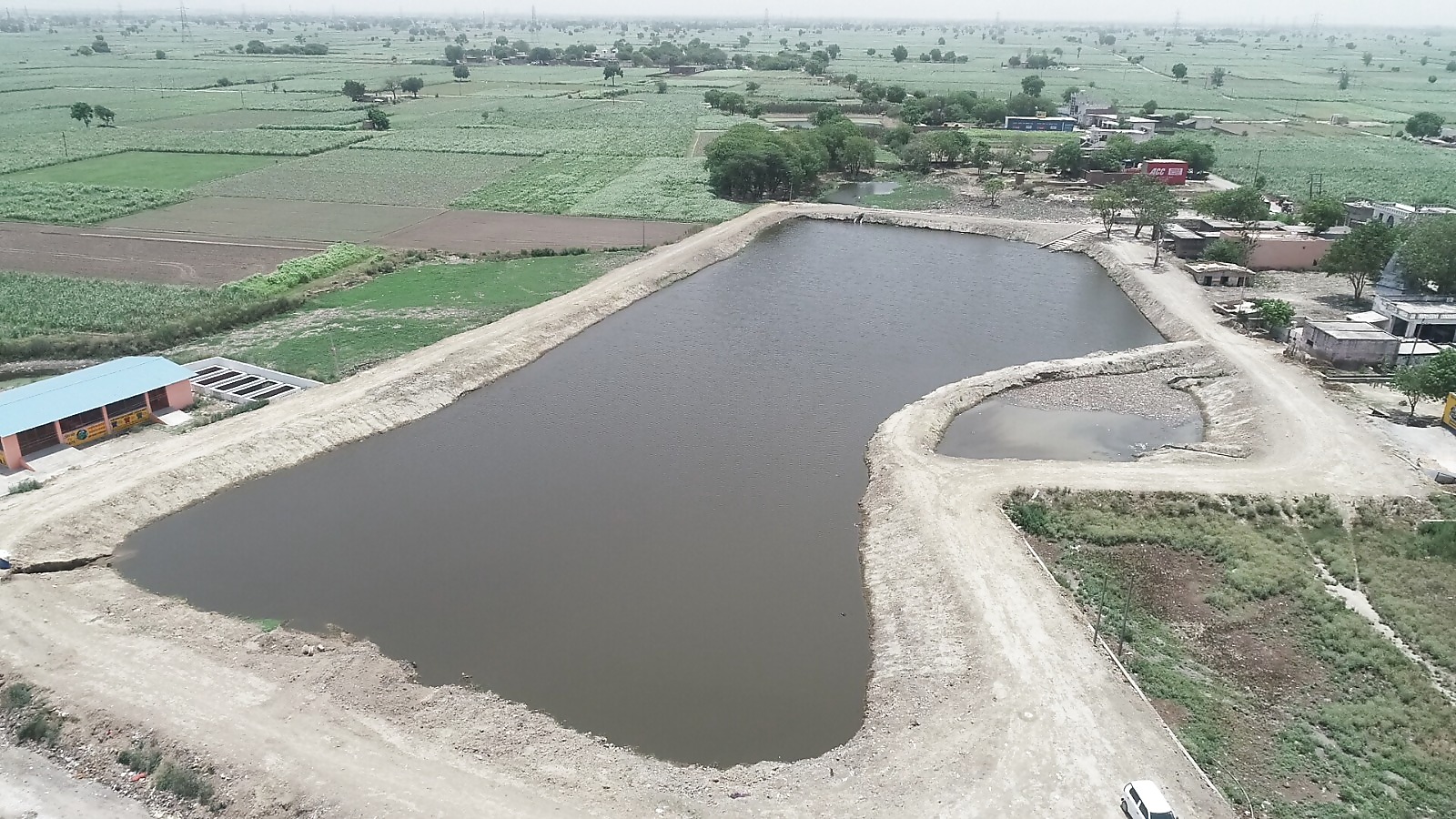
views
Jalalabad, a hidden rural gem in Uttar Pradesh, recently confronted a crisis as neglected ponds began adversely affecting the local community’s livelihood. The Gram Panchayat members persistently sought assistance from Say Earth (an NGO for the restoration and rejuvenation of water bodies) over the years to revive these ponds. Recognizing the urgency of the situation, Ramveer Tanwar and his Say Earth team conducted a comprehensive reconnaissance survey to identify ponds in need of immediate restoration. Subsequently, with the support of Coca-Cola India, Say Earth initiated the restoration process for these identified ponds.
To get more details and insights about the project and its impact, we spoke with Ramveer Tanwar, widely acclaimed as the “Pondman of India” and the founder, Say Earth.
Please elaborate on the specific challenges faced by the Jalalabad ponds that prompted Say Earth’s intervention, and what were the primary goals of this initiative?
Ponds have been the major source of irrigating crops, supporting cattle, and harvesting fish in Jalalabad, but for the past three decades, these ponds were treated as mere waste dumping sites with solid waste as well as untreated wastewater from the village being discharged into the water body. The stagnant water further led to the unchecked breeding of mosquitoes, transforming the ponds into a health scare. Overall, these ponds had lost connection with the communities eventually adding to the process of deterioration.
The primary goals of this initiative were cleaning and rejuvenating the ponds and restoring native biodiversity along with community sensitization. The rejuvenation aimed at restoring water purity and reversing the ecological deterioration in the surroundings. Moreover, collective efforts with Coca-Cola India and enhanced involvement of the local community were encouraged to spread much-needed awareness among the residents.
How has the involvement of the local community been pivotal in the restoration process, and what kind of impact have their contributions made to the overall success of the project?
The involvement of local communities has always been paramount for such restoration projects. The residents were mobilized into ‘Jal Chaupals’ wherein they discussed topics like groundwater extraction, water pollution, rainwater harvesting, water budgeting, etc. This sensitized people about the importance of water and various factors related to water scarcity in society and proved as one of the most important support tools to motivate people to be involved in pond restoration work.
Community mobilization and sensitization made the endeavor more inclusive, and participatory. This also ensured the utilization of indigenous knowledge that played a significant role in the restoration process. The revived ponds now have become important resources for agriculture, animal care, and aquaculture, positively impacting the livelihoods of the villagers.
Can you share any specific details about the sustainable practices implemented during this restoration project and their long-term benefits for the village of Jalalabad?
The implementation process to rejuvenate the ponds involved five major practices- remodeling of drainage system and creation of a filtration pond, landscaping, habitat restoration, resource utilization, and effective waste management. As part of the initiative, the broken inlets in the drainage system were repaired and wherever necessary, new pipes were installed to facilitate seamless transfer of inflow to the ponds. Additionally, a primary landscape design was created in a participatory manner with insights provided by experts, community members, and Say Earth representatives. This was followed by planting native grasses and trees which provide habitat to the avifauna and other aquatic species. Lastly, resource utilization helped ensure that the restored ponds are used for aquaculture activities.
These practices achieved a substantial groundwater recharge of 2,24,350 kilolitres resulting in livelihood generation through activities like animal husbandry, and aquaculture. Moreover, there has been a substantial decrease in vector-borne diseases among villagers living on the shoreline of the ponds.
The initiative aims to improve the health of the pond system. Can you shed some light on the measurable outcomes achieved so far.
We have made significant improvements in restoring these ponds, which were once nothing less than dumping grounds filled with an excessive amount of silt. Together with the Coca-Cola India team, our shared goal was to urgently rejuvenate these ponds due to the challenges faced by the nearby communities. Our collaborative efforts were centered around adopting sustainable practices and prioritizing the well-being of the local communities.
Our efforts have resulted in an increase in groundwater recharge by 2,24,350 kiloliters, surpassing initial goals. The water-holding capacity has seen a remarkable improvement of over 40%, indicating enhanced pond functionality. Livelihoods have been revived through sustainable activities, and a decline in vector-borne diseases along the pond shoreline signifies improved health conditions. Due to distillation and catchment cleaning activities, the total rainwater harvesting potential of the ponds has been augmented and is estimated to be 223443.2 CUM/KL. Additionally, the flooding of streets in villages has reduced considerably due to the increase in storage and permeability of the ponds.

In what ways has the initiative positively impacted the lives of the villagers in Jalalabad, both in terms of their livelihoods and overall well-being?
The lack of water resources for irrigation practices had affected the agricultural practices in Jalalabad. Children, who once used ponds for water-based activities like swimming owing to the lack of any such facility in the villages, had to let go of their favored sport due to deteriorating water quality. After the successful execution of the rejuvenation project, there has not just been an increased livelihood generation through activities like animal husbandry and aquaculture, but residents are also able to the ponds for various recreational activities and domestic purposes.
Can you elaborate on changes observed in the ecological system surrounding the ponds since the restoration efforts began?
The restoration efforts have led to visible changes in the ecological system. The organic load and settled material on the bottom of the ponds had led to eutrophication and proliferation of invasive species like water hyacinths. This adversely affected the native plant and animal species with many not reportedly sighted for many years in Jalalabad. As a result of the cleaning and water distillation in the ponds, there has been an improvement in the local ecological system as shown by the sighting of different species of aquatic birds in the area. The wetlands now support several plant and animal species by providing shelter, food, and breeding sites, for the avifauna.
Could you discuss the extent of Coca-Cola India’s involvement in this project and how their support contributed to the successful restoration of the ponds?
Coca-Cola India has been committed to water sustainability and community well-being across India. Their partnership in this initiative aligns with their ongoing efforts in water conservation and replenishment for local communities across different regions in India. Through projects like the creation of ‘Amrit Sarovars’ in multiple states, Coca-Cola India has been at the forefront of promoting water conservation initiatives. This commitment resonates with the Government’s Amrit Sarovar Mission, which shares a common goal of rejuvenating local water bodies across the country.
Our association with Coca-Cola India in restoring the Jalalabad ponds underscores our mutual dedication to this mission. Together, we have aimed not only to rejuvenate these water bodies but also to positively impact the lives of communities in this region by ensuring access to clean water, supporting sustainable practices, and enhancing the overall ecological health of the area.

















Comments
0 comment